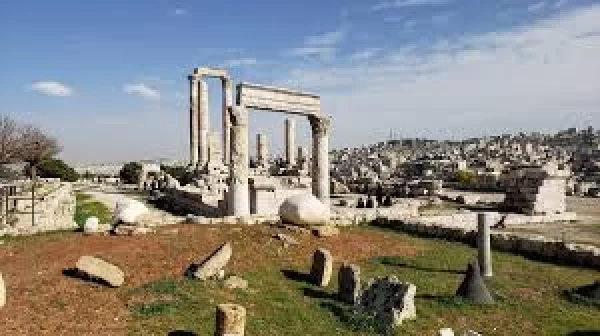
Roman Temple Of Hercules
Amman is rich in archaeological sites and landmarks dating back to ancient civilizations that passed through our region and settled there, establishing major cities, the most important of which is the Ammonite civilization, then the Roman and Greek civilizations, and finally the Arab civilization. These civilizations left many evidences on our land that a visitor to the city center can wander among and learn about their details and historical story, including the large Roman amphitheater.
In the center of the capital; it is considered one of the most important Roman buildings remaining to this day in the city and larger than any Roman temple built in Rome itself. The remaining part of this building constitutes one of the most important landmarks of the city of Amman at the present time, which symbolizes it and its history.
This temple was built in honor of the Roman Emperor Marcus Aurelius between 161 and 166 AD according to some inscriptions found at the site. Today, one remaining facade of the temple, consisting of six massive columns, can be seen, in addition to some other columns from other palace rooms.
The temple was named after Hercules, a Roman goddess whose job and function was to protect the city. At the entrance of the temple, there was erected a colossal statue of Hercules, wherein scratches of the palm can be found.
The structure was originally designed to be 52 metres long and 22 metres wide. Its outer porticoes rested on two rows of columns, each 9 metres high and 1.5 metres in diameter. The columns were topped with Corinthian capitals. The columns were connected by lintels, each 7 metres long. Excavations have revealed that there were incomplete columns, supporting the hypothesis that the building was not structurally complete.














